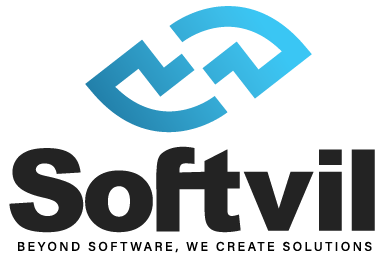Offshore software development partnerships have emerged as crucial conduits for organizations seeking to optimize efficiency, tap into specialized talent pools, and navigate the challenges of rapid technological evolution. The growing importance of these partnerships, underscored by the imperative to stay competitive in an interconnected world, is reshaping the way businesses conceptualize and execute their projects. Offshore collaborations offer the promise of cost-effectiveness, accelerated development cycles, and access to diverse skill sets, making them integral to contemporary business strategies.
However, with the myriad of options available, the decision to engage in an offshore partnership demands a nuanced and strategic approach. Simply outsourcing tasks is no longer sufficient; a meticulous selection process is essential to ensure alignment with organizational objectives and values. This article delves into the intricacies of choosing the right offshore software outsourcing partner, emphasizing the need for a strategic framework. By examining critical factors such as technical proficiency, cultural compatibility, communication efficacy, and project management methodologies, organizations can navigate the complexities of offshore collaboration, fostering alliances that not only meet immediate project needs but also contribute to long-term success in an ever-evolving global marketplace.
Understanding Your Outsourcing Requirements

The initial step involves conducting a comprehensive analysis of your organization’s specific needs, delving into the intricacies of the project’s scope, objectives, and desired outcomes. This diligent examination lays the foundation for a targeted search for a software outsourcing partner capable of meeting these bespoke requirements. Within this framework, identifying specific technical requirements and skill sets becomes a pivotal subtopic. Organizations must articulate the exact technological demands of their project, considering programming languages, frameworks, and development tools. By delineating these specifics, businesses can align with outsourcing partners possessing the requisite expertise, ensuring seamless integration into the project workflow.
In the context of software outsourcing, the synergy between client requirements and the partner’s technical capabilities is a linchpin for success. This approach not only streamlines the partner selection process but also sets the stage for a collaborative venture that maximizes efficiency, minimizes risks, and ultimately delivers a software product that meets or exceeds expectations. As the technological landscape continues to evolve, this strategic understanding of project intricacies becomes instrumental in achieving success in the software outsourcing arena.
Defining the Key Criteria

In software outsourcing, the success of a partnership hinges on a careful consideration of key criteria. Defining these criteria becomes a pivotal step in the strategic selection of a software outsourcing partner, ensuring not only technical compatibility but also harmonious collaboration. This process involves a nuanced evaluation across various dimensions:
Technical Expertise
Evaluating the partner’s technical capabilities:
- A thorough examination of the software outsourcing partner‘s technical prowess is imperative. This involves scrutinizing their proficiency in relevant programming languages, frameworks, and tools essential for the successful execution of the project. Assessing their depth of technical knowledge ensures a seamless integration into the development process.
- Assessing relevant experience in similar projects: Beyond technical skills, understanding the partner’s past experiences in projects similar to yours is critical. Examining their track record provides insights into their ability to handle challenges specific to your industry or project requirements, offering a tangible measure of their competence.
Cultural Fit
- Recognizing the importance of cultural alignment: Cultural compatibility is often underestimated but plays a pivotal role in the success of software outsourcing partnerships. Recognizing shared values, work ethics, and communication styles fosters a collaborative environment. A well-aligned culture ensures smoother interactions and minimizes the risk of misunderstandings or conflicts.
- Strategies for assessing cultural compatibility: Employing strategies to assess cultural compatibility involves considering factors such as time zone differences, work hours overlap, and understanding the partner’s organizational culture. These assessments can include interactive sessions, cultural sensitivity training, or even on-site visits to bridge potential gaps.
Communication Channels
- Establishing effective communication as a cornerstone: Clear and effective communication is the lifeblood of successful software outsourcing partnerships. Establishing robust communication channels from the outset ensures that expectations, updates, and feedback flow seamlessly between teams. This includes defining communication protocols, frequency of meetings, and tools used for collaboration.
- Evaluating language proficiency and communication tools: Language barriers can impede progress, making it crucial to evaluate the language proficiency of the outsourcing team. Additionally, selecting appropriate communication tools that facilitate real-time collaboration enhances efficiency and transparency.
Project Management Methodologies
- Analyzing the partner’s approach to project management: Understanding how the outsourcing partner manages projects is fundamental. This involves scrutinizing their methodologies, frameworks, and overall project management practices. An effective partner should have a structured approach that aligns with your project’s goals and timelines.
- Agile vs. Waterfall: Choosing the right methodology for your project: The choice between Agile and Waterfall methodologies can significantly impact project outcomes. Assessing the partner’s familiarity and proficiency with these approaches helps tailor the project management strategy to best suit the specific requirements of your software development project.
How do you look for potential outsourcing partners?

When embarking on the journey of selecting the ideal software outsourcing partner, the research phase holds unparalleled significance. This phase involves a systematic exploration of potential partners to ensure a strategic and informed decision-making process.
Creating a shortlist of potential offshore development partners
Begin by identifying a pool of potential partners through referrals, industry networks, or online platforms. This shortlisting process allows you to focus on candidates whose expertise aligns with your project requirements and organizational goals.
Conducting in-depth research on each candidate
Once the shortlist is curated, delve into comprehensive research on each potential partner. Scrutinize their portfolios, client testimonials, and case studies to gauge their track record and capabilities. Assess their financial stability, industry reputation, and any relevant certifications or accolades. Additionally, engage in direct conversations with their representatives to gain insights into their communication style, responsiveness, and commitment to client satisfaction.
By rigorously researching potential software outsourcing partners, organizations can sift through the myriad options available, ensuring that the selected partner not only possesses the requisite technical expertise but also aligns with the cultural and operational dynamics critical for a successful and enduring collaboration. This research-driven approach lays a robust foundation for forging partnerships that extend beyond transactional engagements, fostering long-term success in software development outsourcing.
Analyzing Client References and Case Studies

Client references and case studies serve as indispensable compasses in selecting a software outsourcing partner, guiding organizations toward informed decisions and successful collaborations.
Requesting and reviewing client references
A pivotal step in the evaluation process is reaching out to the potential partner’s previous clients. By soliciting and scrutinizing client references, organizations gain valuable insights into the partner’s reliability, communication, and ability to meet project expectations. Direct conversations with former clients shed light on the partner’s strengths, potential challenges, and overall satisfaction levels.
Analyzing case studies to understand past performance
Case studies provide a granular understanding of a software outsourcing partner’s capabilities and accomplishments. By delving into these real-world scenarios, organizations can assess how the partner has navigated challenges, adhered to timelines, and delivered solutions. Examining the intricacies of past projects showcased in case studies aids in gauging the partner’s adaptability, problem-solving acumen, and alignment with specific industry requirements.
By examining client references and case studies, organizations can distil the wealth of available information into actionable insights. This meticulous approach not only validates the software outsourcing partner’s claims but also empowers decision-makers with a comprehensive understanding of the partner’s track record and potential for success in current and future collaborations.
Legal and Compliance Considerations

In the complex landscape of software outsourcing partnerships, a critical juncture arises in the form of legal and compliance considerations. Navigating this terrain demands a meticulous examination of contractual intricacies and a steadfast commitment to data protection.
Reviewing legal aspects, contracts, and compliance issues
Thoroughly scrutinizing legal aspects and contracts is paramount when selecting a software outsourcing partner. This involves a comprehensive review of contractual obligations, terms, and conditions, ensuring alignment with the project’s scope, timelines, and deliverables. Addressing potential legal pitfalls at this stage mitigates risks and fosters a transparent and cooperative relationship between parties.
Ensuring adherence to data protection regulations
As data becomes an increasingly valuable asset, safeguarding it is imperative. Organizations must ascertain the software outsourcing partner‘s commitment to data protection and compliance with relevant regulations. This involves assessing the partner’s data security measures, confidentiality protocols, and adherence to international standards such as GDPR or HIPAA. Ensuring robust data protection measures not only safeguards sensitive information but also fortifies the legal foundation of the partnership.
Incorporating a stringent focus on legal and compliance considerations is pivotal, forming the bedrock of a secure and mutually beneficial software outsourcing partnership. This proactive approach not only minimizes legal uncertainties but also establishes a framework for ethical and responsible collaboration in the ever-evolving landscape of software development outsourcing.
Risk Mitigation Strategies

In the dynamic domain of software outsourcing partnerships, adept risk mitigation strategies stand as sentinels guarding against unforeseen challenges. This strategic approach involves a dual focus on proactive planning and effective communication channels.
Developing contingency plans for potential risks
Anticipating potential risks is a cornerstone of risk mitigation in software outsourcing partnerships. Crafting comprehensive contingency plans allows organizations to navigate challenges seamlessly. This includes identifying critical project junctures, assessing potential pitfalls, and formulating alternative courses of action. By preemptively addressing potential issues, organizations can bolster their resilience and ensure project continuity in the face of uncertainties.
Establishing clear communication channels for issue resolution
Effective communication serves as a linchpin in risk mitigation. Establishing clear and transparent communication channels ensures swift issue resolution. This involves defining escalation protocols, establishing regular progress updates, and fostering an environment where concerns can be voiced openly. Proactive communication not only aids in identifying emerging risks but also cultivates a collaborative atmosphere conducive to resolving challenges in real-time.
In weaving a fabric of risk mitigation strategies, software outsourcing partners fortify their collaborative efforts. By combining meticulous planning with transparent communication, organizations elevate their ability to navigate uncertainties, fostering resilience and success in the intricate landscape of software development outsourcing.
Conclusion
In conclusion, the strategic selection of a software outsourcing partner demands a meticulous and multifaceted approach. By navigating through the key criteria of technical expertise, cultural fit, communication channels, and project management methodologies, organizations can forge collaborations that transcend transactional engagements. Rigorous research, client references, and legal considerations provide a comprehensive foundation, while risk mitigation strategies fortify the partnership against uncertainties. This strategic blueprint not only ensures the immediate success of software development projects but also lays the groundwork for enduring and mutually beneficial relationships in the ever-evolving landscape of global software outsourcing.

